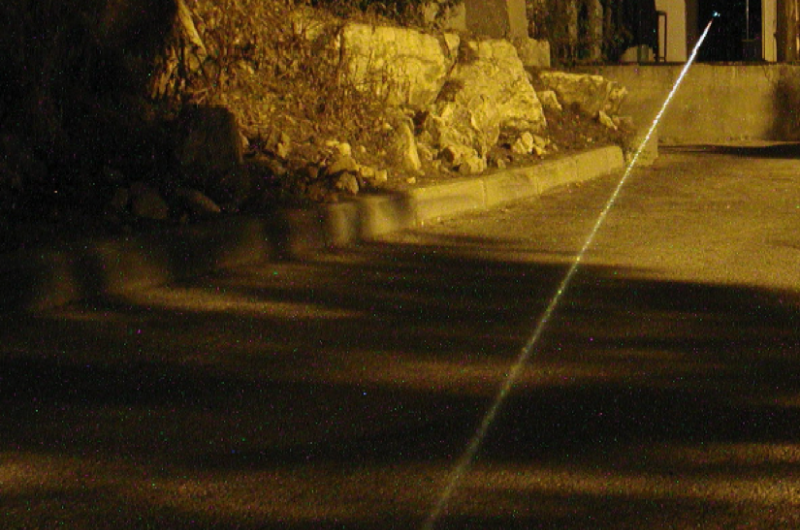New methods to make longer streams of plasma with greater longevity could lead to laser-powered lightning rods

Benjamin Franklin invented the lightning rod 250 years ago to protect people and buildings from lightning strikes. Someday, those metal poles may be replaced with lasers.
A team of researchers from The Hebrew University of Jerusalem, Israel, have demonstrated new techniques that bring lasers as lighting rods closer to reality.
When a powerful laser beam shoots through the air, it ionizes the molecules, leaving a thin trail of hot, ionized particles in its wake. Because this stream of plasma conducts electricity, it could be used to channel away a potentially damaging lightning bolt.
The researchers found ways to make the length of such a plasma channel reach more than 10 times longer—a necessary advance for using the channel to redirect a lightning strike.
Jenya Papeer, The Hebrew University of Jerusalem, will present the work on 22 October 2015 at Frontiers in Optics, The Optical Society's annual meeting and conference in San Jose, California, USA, on 22 October 2015.
The researchers created a channel of plasma by firing a powerful laser that produces a pulse lasting a fleeting 100 femtoseconds (one femtosecond is 10-15 seconds). The problem is that the resulting plasma stream, 100 microns in diameter, lasts for only about three nanoseconds. After that time, the plasma cools off, the electrons recombine with the atoms and the channel disappears.
To extend the lifetime of the plasma channel, the researchers shot another laser whose beam overlaps the plasma. The secondary laser, which produces 10-nanosecond bursts, keeps the plasma hot and prevents the electrons from recombining so quickly, extending the longevity of the plasma channel by more than a factor of 10. The team is now working on ways to fire a more powerful secondary laser—or maybe additional beams—to increase the lifetime of the channel even more.
In principle, Papeer says, a longer life could also extend the length of the plasma channel, which stretches for only about a meter. The laser creates the trailing plasma stream analogous to the way a pen leaves behind a line of ink. If the ink disappears soon after the pen makes a mark, you can only ever draw a short line. But if the ink were to last longer, you could draw a longer line. Likewise, a longer-lasting plasma would result in a longer channel.
In related work, the researchers also devised a method to lengthen the plasma channel. The laser beam typically generates multiple plasma channels that spread out randomly along the laser beam. But by designing an apparatus of lenses that controls how the laser is focused, the researchers were able to make three plasma channels that line up in sequence, one after another.
The result is a three-segmented plasma channel that acts as a single, three-meter long channel. "The beauty is that you can extend it for pretty much as long as you want, as long as you have the proper optical set up and a laser beam with enough power," Papeer says. In fact, this ability to extend the channel to an arbitrary length is the main advantage of this method.
The next step, Papeer says, is to combine both methods to produce a plasma channel that's greater in both lifetime and in length.
More information: The presentation, "Towards Generation of Long and Continuous Plasma Channels in Air," Evgeny (Jenya) Papeer, will take place from 19:30 – 20:45, Thursday, 22 October 2015, at The Fairmont Hotel, San Jose, California, USA.
Provided by Optical Society of America



















